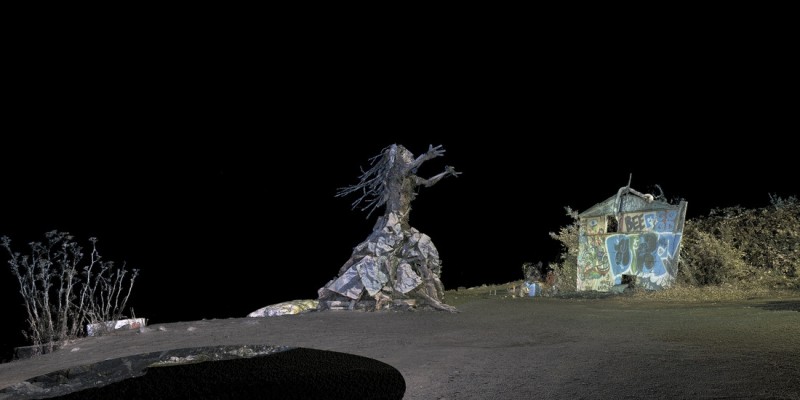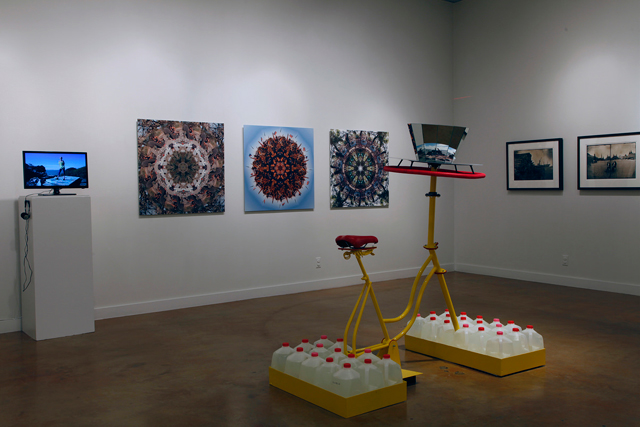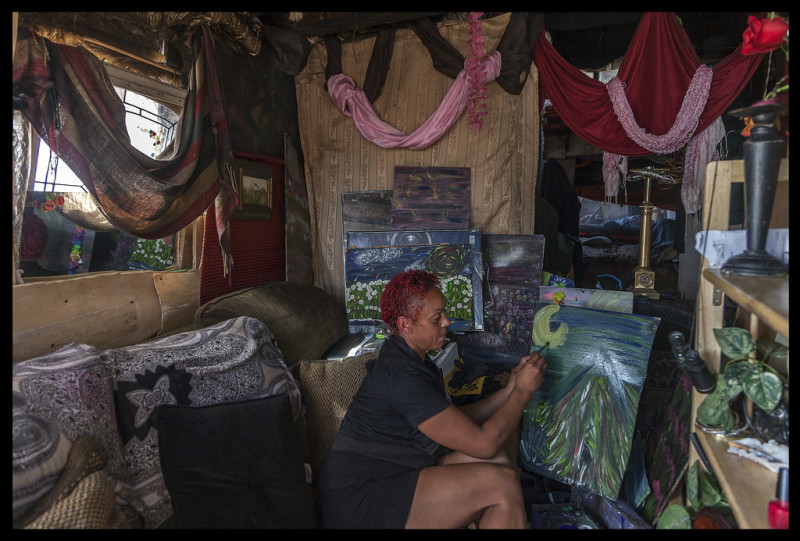In April 2014, more than two dozen people were evicted from their informal settlement at the Albany Bulb along the East Bay shoreline. After a complex battle encompassing land-use issues, homeless advocacy, creative reuse and access to public space — and what, exactly, that access should look like — the residents were offered roughly $3,000 each to pack up and leave.
A former landfill owned by the city of Albany, the Bulb has been a hotly contested space for decades. It’s been utilized as a DIY venue for public sculpture and graffiti art, an ersatz dog park, a point of environmental interest and a home to otherwise unhoused residents reclaiming unused materials to build habitable spaces, at least one of which towered at three stories high. And although the last residents of the Bulb have left the space, many have collaborated with several Bay Area artists and SOMArts for an upcoming exhibit, Refuge and Refuse: Homesteading, Art and Culture, which opens Feb. 12 and runs through Mar. 14.

“For me, it was really that combination of the communities of people who lived out there dynamically with the arts, and the place, and the million-dollar views,” says Oakland resident and San Jose State University professor of art Robin Lasser, one of the show’s curators. “I’m exaggerating here, but for me it felt like one of the last places on earth where you had this kind of freedom. For me, [it reflects] the sixties when you had movements of people doing experimental living; life was embraced and politicized and fought for.”
That freedom extended to the art created at the Blub. “One of the incredible things about the bulb and the contested space is that you just do what you do,” Lasser says. “The landfill art that is out there and the graffiti that is out there aren’t sanctioned. Artists didn’t have curators saying what was valuable and what was not.”

Lasser and co-curators Danielle Siembieda and Barbara Boissevain have created an exhibit showcasing the complexities of the political, social and environmental issues around housing, the economy, and the environment. Their work, along with that of many of the evicted tenants, exposes the multiple realities that have coexisted on the land; the collaborative projects give a face to those forced out of a place they once called home.




